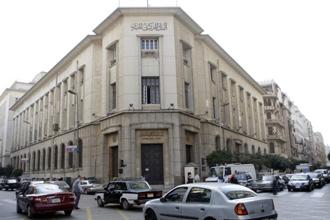In the first half (H1) of the fiscal year (FY) 2016/2017—between July to December 2016, Egypt’s transactions with the rest of the world showed an overall balance of payment (BOP) surplus of $7.0bn, against an overall deficit of $3.4bn in the same period a year earlier, according to a press release by the Central Bank of Egypt (CBE).
The CBE said that the surplus is the result of capital and financial accounts that unfolded a net inflow of $17.6bn, compared to $6.2bn y-o-y. Meanwhile, the current account deficit registered $9.6bn, versus $9.4bn.
From October to December 2016, the overall BOP surplus increased to $5.1bn, up from $1.9bn from July to September. This came in the wake of the decision of the liberalisation of the Egyptian pound exchange rate in November 2016.
The CBE stated that the flotation had a positive impact on the BOP components during that period.
The report noted that the current account deficit registered $9.6bn from July to December 2016 (against $9.4bn y-o-y). However, it improved from October to December 2016 by 6.4% compared with the preceding period from July to September 2016, and by 13.1% compared with the corresponding period from October to December 2015.
Moreover, the trade deficit narrowed by 10.1% during the period under review to $17.9bn—versus $19.9bn—due to the $1.3bn rise in merchandise exports, and the $681.5m decline in merchandise imports.
The CBE noted that the trade deficit improved from October to December 2016 relative to the corresponding period of the previous FY, recording $9.2bn (against $9.9bn). “Such an improvement was owed to the 17.9% increase in merchandise exports to $5.2bn (from $4.4bn), reflecting the increase in non-oil exports by 28.7% to $3.8bn (from $2.9bn),” the statement read.
In addition, the services surplus declined by 47.2% from July to December 2016, driven by the drop in tourism revenues of 41.5% to $1.6bn (from $2.7bn) on account of the decline in the number of tourists’ visiting nights by 49.8%, to 19.2m (from 38.3m).
Suez Canal receipts declined by 5.0% to $2.5bn from July to December 2016, (against $2.6bn) as net tonnage of transiting vessels fell by 2.5% and the depreciation of the value of the special drawing right (SDR) against the US dollar by an average of 1.1%.
The CBE said that net income balance achieved a net outflow of $2.2bn from July to December 2016, primarily because investment income payments registered $2.4bn—65.6% of which were profit transfers by oil and non-oil foreign companies operating in Egypt.
Meanwhile, investment income receipts registered as low as $176m.
Furthermore, unrequited net current transfers declined by 3.3% from July to December 2016 to $8.0bn (from $8.3bn), as a result of lower net private transfers to just $7.9bn (from $8.2bn), mainly due to the decline in workers’ remittances by 5.7%. Meanwhile, net official transfers rose to $72.9m (from $32.2m).
The CBE pointed out that workers’ remittances increased from October to December 2016 by 35.6%, as compared with the preceding period, and by 11.9% relative to the corresponding period, to reach $4.6bn (against $3.4bn and $4.1bn, respectively).
According to the CBE, the July-December 2016 period saw the capital and financial accounts record a net inflow of $17.6bn (against $6.2bn in the period of comparison). Notably, from October to December 2016, it registered a net inflow of $10.5bn (against $4.5bn in the period of comparison).
The CBE added that total Foreign Direct Investment (FDI) inflows rose from July to December 2016 by $1.3bn to $7.4bn (against $6.1bn), while total outflows registered $3.1bn (versus $3.0bn). Accordingly, the net inflow of FDI in Egypt mounted to $4.3bn (from $3.1bn).
Portfolio investment in Egypt achieved a net inflow of $212.9m from July to December 2016 (against a net outflow of $1.6bn). This was ascribable to the rise in foreigners’ investments in the EGX, recording net purchases of $331.7m (versus net sales of $120.7m). In addition, foreigners’ investments in Egyptian treasury bills increased, to register net purchases of $686.7m (against net sales of $38.3m). This came despite the Egyptian authorities repayment of bonds that had become due in the reporting period, an amount of $1.0bn (outflows), which attests to the confidence in the Egyptian economy, given its ability to honour its external obligation, the CBE stressed.
The CBE added that medium- and long-term loans and facilities achieved net disbursements of $3.9bn from July to December 2016 (against net repayments of $208.4m). The net change in the liabilities of the the CBE to the external world increased, thereby registering a net inflow of $8.1bn (against $1.5bn), while the net change in banks’ liabilities declined, recording as such a net inflow of $1.5bn (versus $2.4bn).



